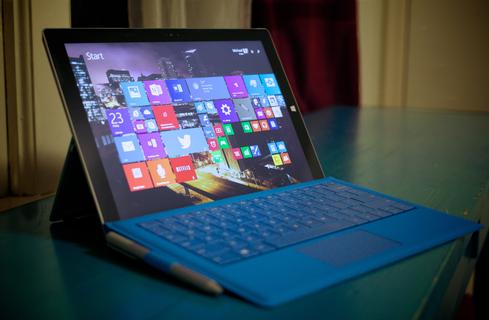Intel Core M Chips: Tablet TurbochargeIntel Core M Chips: Tablet Turbocharge
Intel's Core M chips will make Windows tablets lighter and thinner than ever, while its "Devil's Canyon" chips bring the speed.


Surface Pro 3 Vs. World: Mobile Smackdown
Surface Pro 3 Vs. World: Mobile Smackdown (Click image for larger view and slideshow.)
Whether you're a desktop power user or an on-the-go pro who wants the thinnest laptop available, Intel's new chips might be just what you've been waiting for. Built using a cutting-edge 14-nanometer fabrication process, the power-efficient Core M family will soon fuel a range of tablets and 2-in-1 PCs slimmer and lighter than any currently on the market. The Core K processors, meanwhile, are the first to offer a base frequency of 4.0 GHz on all four cores. Intel president Renee James unveiled the pair of processor lines during a keynote at the Computex trade show in Taipei, Taiwan.
The Core M line plays an important role in Intel's goal to be a bigger mobile player. The most popular tablets traditionally run on ARM chips, which have allowed for thinner designs and better battery life than Intel offerings. But Intel has fought back with not only improved versions of its mobile-oriented Atom line, but also the Core M, which boasts much of the Atom's mobile-friendliness but maintains PC-level performance.
[Will $199 Windows 8.1 tablets sway buyers? Read Toshiba Windows Tablets: Priced Right?]
The Core M line ushers in Intel's fifth-generation Broadwell processors. The new family, as mentioned, is built using a 14-nanometer process, which enables Intel to create smaller, more energy-efficient chips. The Haswell processors inside most today's new PCs and Windows hybrids rely on older 22-nanometer technology. Intel claims Core M devices will offer better performance even though the chips consume up to 45% less energy and generate up to 60% less heat. Intel declined, however, to estimate how much Core M might improve battery life.
The low-heat, energy-conscious design should allow manufacturers to produce fanless devices. Most of today's thinnest 2-in-1 PCs -- such as the Surface Pro 3, which was touted at its introduction as the thinnest, lightest Core-based device in history -- need to make room for a small fan.
Intel showed off the M processor with a prototype 2-in-1 tablet nicknamed Llama Mountain. At 7.2 mm thick, the device is thinner than an iPad Air but offers a much larger screen -- 12.5 inches. It weighs more than the iPad, but is still light at 1.5 pounds -- lighter, in fact, than the similarly sized Surface Pro 3.
As a reference design, Llama Mountain is intended to guide Intel's OEM partners and will not itself reach the market. Nevertheless, the Asus Transformer Book T300 Chi, also showcased at Computex, hews close to Intel's prototype. One of the first devices to use a Core M chip, it is only 7.3 mm thick in tablet mode, and only 14.3 mm thick when docked into its keyboard base -- thinner than a MacBook Air. The T300 Chi also boasts a 12.5-inch, 2560x1440-pixel screen. The Asus 2-in-1 and other Core M devices are expected to hit the market later this year.

The Asus Transfomer Book T300 Chi will use a fifth-generation Intel Core chip.
But not all users value mobility and sleek, thin devices -- some simply want all the computing muscle they can get. For this second group, Intel introduced the Intel K line. A new version of Intel's Haswell processor family, the K chips will be available in both i5 and i7 options, and will deliver up to 4-GHz base speeds on all four cores. Today's Intel Core chips can reach this frequency only in bursts while in Turbo mode. Codenamed "Devil's Canyon," the K processors will begin shipping this month.
What do Uber, Bank of America, and Walgreens have to do with your mobile app strategy? Find out in the new Maximizing Mobility issue of information Tech Digest.
About the Author
You May Also Like






